Let’s move on to part six, where the good things are keep coming. Essen Spiel 2018 is over and now we need to thinning the herd and make them count. So which games you actually interested on?
 HOLDING ON: THE TROUBLED LIFE OF BILLY KERR
HOLDING ON: THE TROUBLED LIFE OF BILLY KERR
A new release from HUB Games (the one that published UNTOLD: Adventure Awaits and Rory’s Story Cubes). In this game, players will take the role of Nurses in a Palliative Care Unit of a hospital in London. And the hospital receives a transfer patient of a massive heart attack, with the name of Billy Kerr (60 years of old), which is surprising that he still alive. The players will need to take turns to be shift manager in days of work on the hospital. Each player will have a nurse pawn of their colors and there are also assistants and On-Call Assistants that they can use to allocate medical or palliative care to the patient. Medical care is given to maintain the patient health condition, where palliative care is given to build trust between the patients and the nurses so the patient can open his memories. The game comes with 10 scenarios and players will try to complete them in order. The goal is to complete the objectives of each scenario while maintain Billy’s life. To achieve these objectives, players will need to piece together Billy’s lifetime memories while being drawn into his troubled past. It is a worker placement cooperative game, with unique elements. The round is broken down into 3 shifts, Morning, Day and Night shifts. In these shifts, players will take shifts to provide care for Billy. The worker placement aspect is unique, the nurses (workers) can get stressed from covering shifts. Having stress restrict Nurses to work, being overstressed forced them to take on leave (unavailable). A card board ring is used to mark stress on a nurse. Also when trying to give treatment to Billy, players need to decide whether if they want to treat palliative or medical. Palliative gives players closer to their objective, when Medical gives players to maintain Billy’s health condition. Players cannot provide both treatments for a day, so this is the huge decision on planning. When I read the back story of the game, I am hooked. It is unique regardless it is a cooperative game. Of course, cooperative aspect is still a huge warning for me so this need further research or maybe tryout, but this one has potential.

 BAD BONES
BAD BONES
Bad Bones is a Tower Defense game from Sit Down! Games where players are trying to defense their villages from horde of skeletons while averting those skeletons toward their neighbors. Personally I really like the game art cover. It has a similar look as Tokaido, with white clean background and a piece of illustration in the center, a dragon on top of a tower facing a skeleton. Each player will have their own board (it’s a 5×5 grid with a tower in its center). Players will have to defend their villages and tower with their hero and traps (one of those is a dragon, how cool is that? Of course these are only tiles except of the hero figure). The game comes with a lot of tiles (lots of skeletons) so it’s going to be quite a heavy box. In the game, players will move their heroes around, place or retrieve traps, move the skeletons and spawn them. The skeletons are moved by a certain command based on the movement icons printed on the squares while they are spawned from cemeteries into the board. Illustration and specific symbol on the skeleton tiles will determine where each skeleton tile is going to show up on player’s board. Aside from defending their villages (tiles that worth points if not destroyed by skeletons), they should change the skeletons on their board to move toward their neighbor. I think this is the interesting aspect of the game, where players need to plan carefully with movement programming to do two things, defend their villages and let their neighbors get attacked. Also the game has two modes of play (A for basic and B for advance with cooperative play, advance and skeleton chiefs). The advance version adds a new market phase where players have to buy traps and weapons and also there are coins in the game. The skeleton chiefs add new special skeletons into the bag.

 WANGDO
WANGDO
In this abstract game of network building (kind of), players will compete to be selected as the heir of the throne. To do this, they need to travel around the world and erect sacred bear steles (statues). The game board depicts some sort of a map with routes and spaces where players will place knowledge tokens on these spaces during setup randomly. And before the game starts, they must replace all (four) the bear tokens with random bear steles (statues) from the bag. There are 4 colors of bear steles (black, blue, white and orange). Players will have a personal board and random 3 starting Steles from the bag. The goal is simple, be the first to collect 2 tokens of each type (A set collection game? You can say that).

Now the game is very simple, in players turn, they chose one of two available actions which are getting new steles or acquire a knowledge token. To get new steles, they can either take 2 steles from the temples (supply of steles divided by colors) or 3 random steles from the bag. To acquire new knowledge token, they have to place stele on that space and then pay the cost. The cost is the twist part of the game, it varies depend on the number and color of adjacent steles from the space you place a stele.

They need to pay the cost to the temple. Placing steles on the temples may trigger a ritual when a stele is placed on the last space of a temple. All steles on that temple will be returned to the bag and that player will get one stele chosen from one of the other temples. When players manage to get 2 tokens of a single type, they will get a seal card that can help players during the game. Despite the game has a racing element to trigger the game end, it has certain scoring if more than one player managed to finish their tokens during the last round. The winner is player with the most Dragon seals, which can be found in some of the tokens and the back of the seal cards. Though the chance to get this situation is like Istanbul or Viticulture? The illustrations are beautiful (lots of colors, mostly green), not to mention the steles (plastic or resin? I bet it’s not wooden).
 BLACKOUT: HONGKONG
BLACKOUT: HONGKONG
A new game from Alexander Pfister, the designer of Great Western Trail. To be honest, I was kind of surprised with this game visual presentation. It’s a unique theme and visual approach for Alexander Pfister. He mostly designed games with classic themes but this one isn’t. Briefly I thought this one is a cooperative game (it really reminds me of Pandemic in term of visual appearance). The game takes place in Hongkong (the near future 2020) where a massive blackout happened on the entire city. Players will work their ways to secure districts by placing their markers on locations that will enclose a district. To do this they need to gain resources (which is designed in the form of dice rolling combined with a rondel. There are 3 resource dice (each has a specific color and symbols on them) that will determine what resources are available for the round. Players then will choose cards from their hands to their board (up to 4 slots of cards). Following the turn order they will reveal the assigned cards and carry out their plans. There are two kinds of cards, specialists and volunteers. Specialists let you do special actions while volunteers allow you to procure things (resources) based on their colors (place cubes on the rondel based on where the same color resource die is). Players may procure resources other than shown by the dice by spending transport tokens. Players also can complete objectives by paying the requirement. Completed objectives allow players to get points, coins and place cubes on the map. The game comes with campaign mode and can also be played in solo mode. The campaign mode offers certain challenges and what objectives the players need to complete. This is surely unusual kind of game from the designer, personally I am not really into this, the overall game’s visual is not appealing to me, but I am kind of curious on how the game play really is.

 NEMETON
NEMETON
The forest is corrupted, the trunks are blackened and the sap is toxic. The animals are dying and it’s up to the druids to save the forest and fight back the darkness. In this game players will be druids who will try to heal the forest by creating Nemetons, a sacred ground for brewing purifying potions. The game lasts for 10 or 11 rounds and in each round there will be Night, Dawn, Day and Dusk phase. In the night phase players will take turns to place a forest tile from their stack to the board face down (with moon side facing up). This tile will determine what tiles in straight lines are activated. Players place plants to empty tiles showing plant symbols. In Dawn phase, the Moon tiles are flipped on its day side, this may trigger a special tile to be placed onto the board. In Day phase, the druids will have to move one or two tiles in a straight line and then may use the action of the space it ends movement. Players can collect plants on the tile, brew potions (to get points), earn animal’s trust, or benefit from one of the two powers of the oak. Once per turn players can also use the animal spirit that they’ve collected. There are several kind of animals, each has its own ability. The game is a tile placement game with point to point movement. Players also may complete goals that are shown on the common board, the first player to complete a certain goal will get a plant from that space. I think Nemeton is quite a light Euro game with moderate complexity from the different kind of tiles and available actions. It might be a good addition if you are looking for a tile placement game with a set collection.

 TALES OF GLORY
TALES OF GLORY
In this game you are heroes that hungry for adventures. You will visit different places to defeat monsters and gain treasures. In this game players will get adventure tiles and add them to their hero tiles. In each round players will assign a card to determine their destination for the round (which adventure tile that they want) and reveal it simultaneously. Then they need to pay for the tile in order to place it on the table in front of them, adjacent to one of their placed tiles. These tiles must be placed in upright orientation and the side with a diamond must connect to other tiles with the same diamond side. Once the tile is placed, players will get rewards depend on the tile. Some tiles contain chests which can only be opened with a key token. Players can get key tokens from rewards or discard a tile instead of placing it. The game ends after 10 rounds. I think it’s a simple tile placement game with simultaneous action selection. I love the cartoony illustrations by Miguel Coimbra. I am not sure the game will have high replay value (though it also comes with Quest tiles that give more replay value than the base game). I think this is a nice addition to my collection, though the big question is if this game is good enough to be in my collection or not.

 SHADOWS AMSTERDAM
SHADOWS AMSTERDAM
This game is another interesting game that uses the core mechanic from Codenames and Mysterium. In this game, players will play in two teams. Each team will have one player as the Intelligence Officer while the others are Detectives. You can say that Intelligence Officers are the same as Master Spy in Codenames. These players will get a screen and a map card. To win the game, a team must win 2 rounds of the game. To win a round, the team needs to find three different pieces of evidence and deliver them to their client. The game is played in real time, so there’s no turn for each team. To find the evidence, the Intelligence Officers use Intel cards to give their detectives a clue to where they should move on the map. The Intelligence officers may not speak or gestures to avoid giving extra clues. You can find similarities of this game with Codenames. As word cards from Codenames are changed to hex tiles with images that form a map board. Players will try to guess these locations based on some Intel cards that the Intelligence Officer is using. I think the game is really interesting, they use a unique mechanic from a famous game and modify it with different approach. Though my concern is that somehow players can see the direction of the Intelligence Officer is looking at on the map board as they constantly check their map card behind their screen, this will surely give away important information for their detective agents.
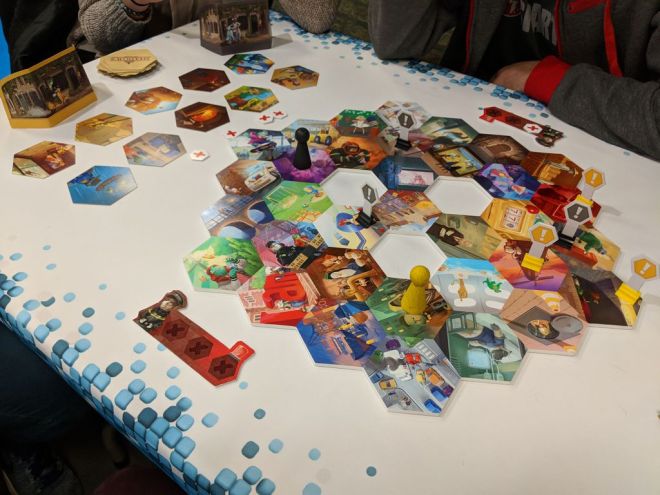
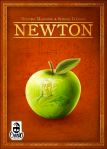 NEWTON
NEWTON
From one of the designers of Lorenzo il Magnifico (Simone Luciani) and Nestor Mangone, CMON brings Newton, a new game about scientists in the 18th century and their efforts to make a mark in the world. In this game, players take the roles of young scientists who eager to be great geniuses of the world. Players will travel around Europe, to visit universities, study to discover new theories, create tools and also work to earn money. The game lasts for 6 rounds, where in each round players will play cards to do some actions. The actions will be progressive as previous played cards will improve those actions. Though the core actions are simple (involving Work, Technology, Travel, Lessons, Study and Joker actions), there are lot of things to keep in mind. Each action has multitude of considerations that players need to carefully decide. These are probably what make the game complicated. Adding cards to player’s tableau represents the tableau building mechanic of the game. Though briefly the game offers many things at once, there are many things to keep track in a single game. There is a map that shows universities across Europe, income track where you keep track of your works, Bookshelves in players’ study board to keep track your studies, also space to keep track of your inventions. I just thought that with all of these, it would really be interesting to see them fit altogether as a giant big machine. This is surely one of my most anticipated titles from Essen 2018.
Note: images are taken from http://www.boardgamegeek.com and full credit to their owner.

 REYKHOLT
REYKHOLT
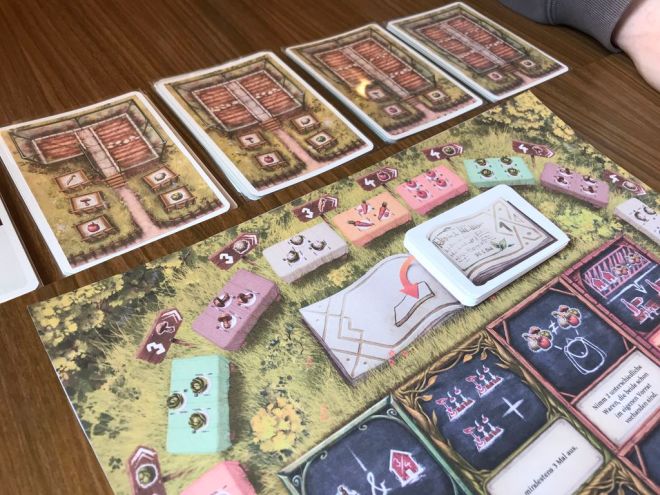
 ADRENALINE – TEAM PLAY DLC
ADRENALINE – TEAM PLAY DLC But not just that, this sixth character allows the game to be played in team play, whether you play it 1 vs 1 or 2 vs 2 or 3 vs 3, you will use all of the characters in the game. Yap, team play as the name suggests. So there will be black and white team in team play and it will be using a new way of dealing damage, with buffers. The instance you deal damage to your opponents, they’re not instantly receive wounds, but instead all the wounds are collected with their own wound tokens in their team’s buffer board, which when it’s full the wound will then be distributed. I am not sure why they designed it this way, but I am certain they have a good reason for it.
But not just that, this sixth character allows the game to be played in team play, whether you play it 1 vs 1 or 2 vs 2 or 3 vs 3, you will use all of the characters in the game. Yap, team play as the name suggests. So there will be black and white team in team play and it will be using a new way of dealing damage, with buffers. The instance you deal damage to your opponents, they’re not instantly receive wounds, but instead all the wounds are collected with their own wound tokens in their team’s buffer board, which when it’s full the wound will then be distributed. I am not sure why they designed it this way, but I am certain they have a good reason for it.
 TEOTIHUACAN: CITY OF GODS
TEOTIHUACAN: CITY OF GODS
 GINGERBREAD HOUSE
GINGERBREAD HOUSE
 THE BOLDEST
THE BOLDEST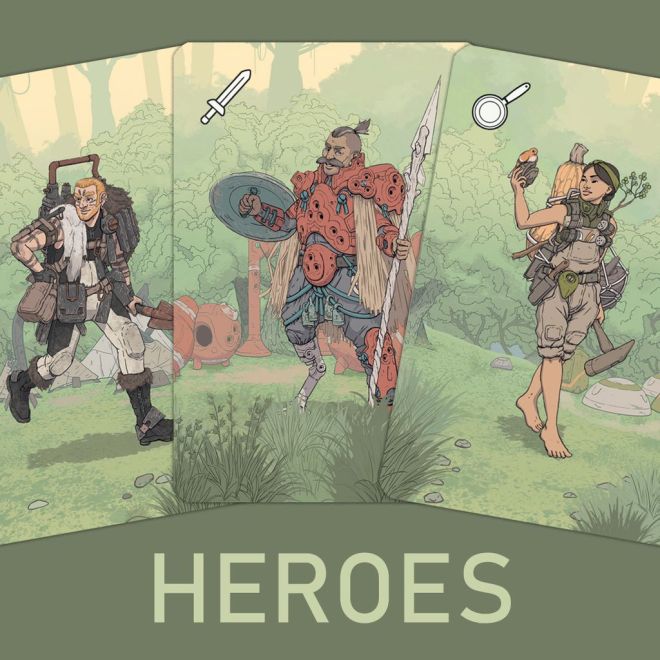
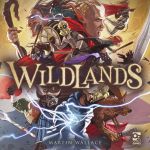 WILDLANDS
WILDLANDS
 PANTONE THE GAME
PANTONE THE GAME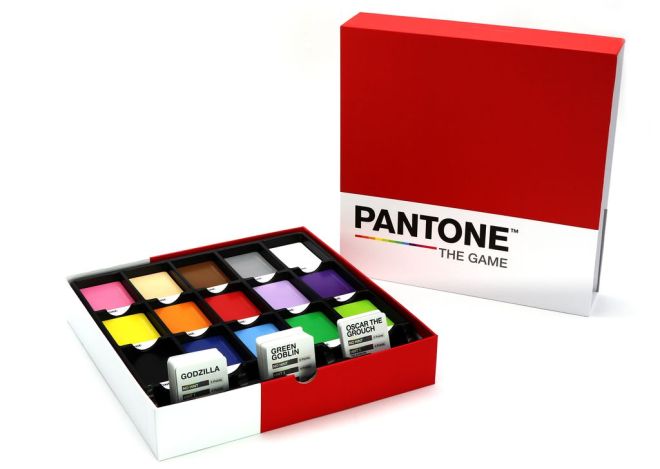
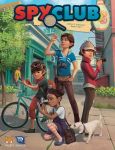 SPY CLUB
SPY CLUB
 KERO
KERO
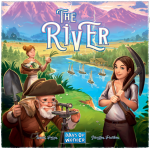 THE RIVER
THE RIVER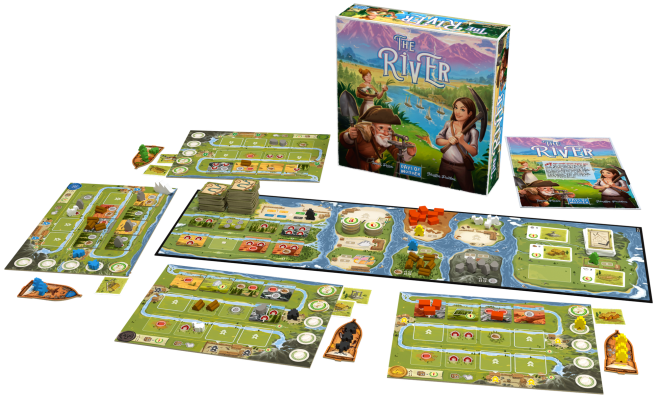
 CARPE DIEM
CARPE DIEM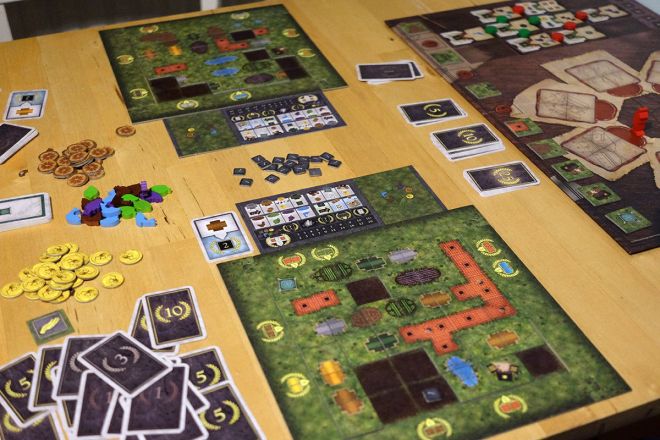
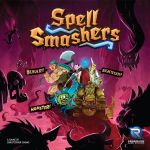 SPELL SMASHERS
SPELL SMASHERS
 SYMPHONY NO. 9
SYMPHONY NO. 9
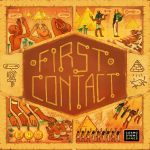 FIRST CONTACT
FIRST CONTACT FUTUROPIA
FUTUROPIA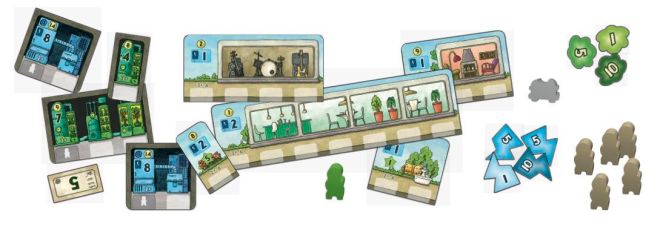

 SOLENIA
SOLENIA
 SUNFLOWER VALLEY
SUNFLOWER VALLEY
 BETWEEN TWO CASTLES OF MAD KING LUDWIG
BETWEEN TWO CASTLES OF MAD KING LUDWIG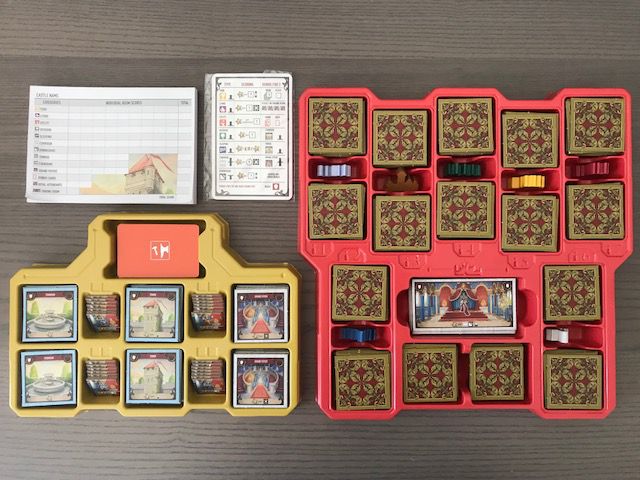
 DICIUM
DICIUM
 ATLANDICE
ATLANDICE
 ARCHITECTURA
ARCHITECTURA
 PLANET
PLANET
 BLUE LAGOON
BLUE LAGOON
 RUTHLESS
RUTHLESS













 PULSAR 2849
PULSAR 2849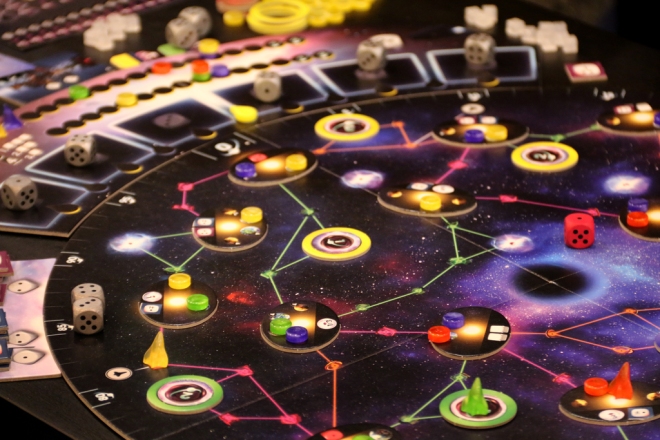
 PHOTOSYNTHESIS
PHOTOSYNTHESIS
 UNTOLD – ADVENTURES AWAIT
UNTOLD – ADVENTURES AWAIT
 VIRAL
VIRAL
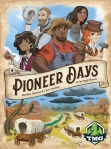 PIONEER DAYS
PIONEER DAYS

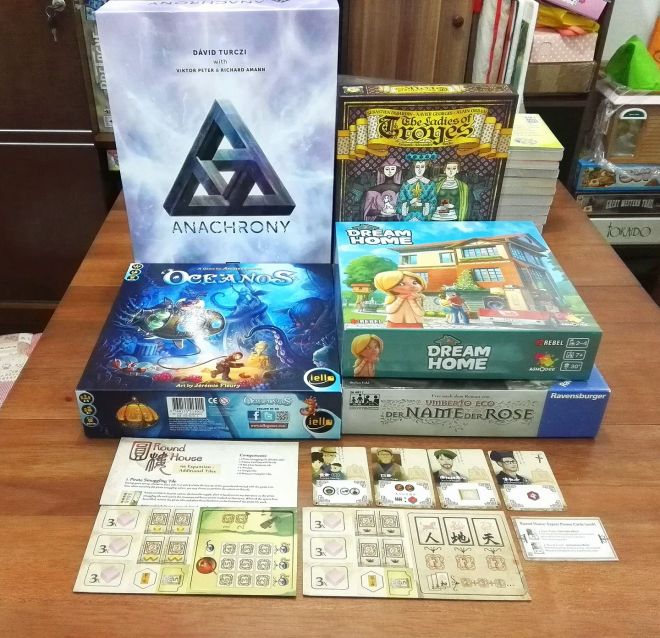


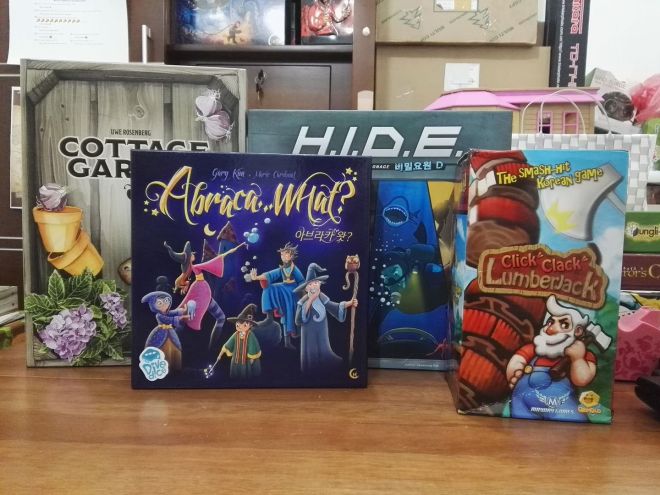



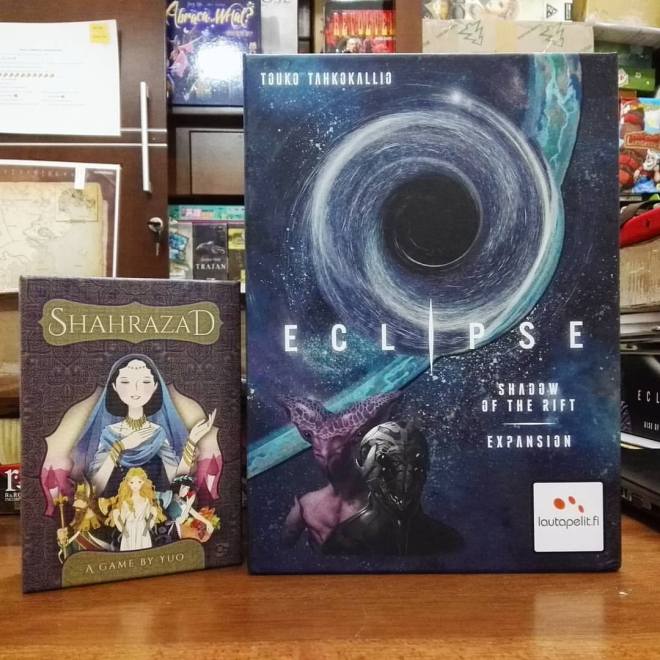


 DOGS
DOGS
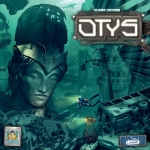 OTYS
OTYS
 FALLOUT
FALLOUT
 WORD DOMINATION
WORD DOMINATION
 NOMADS
NOMADS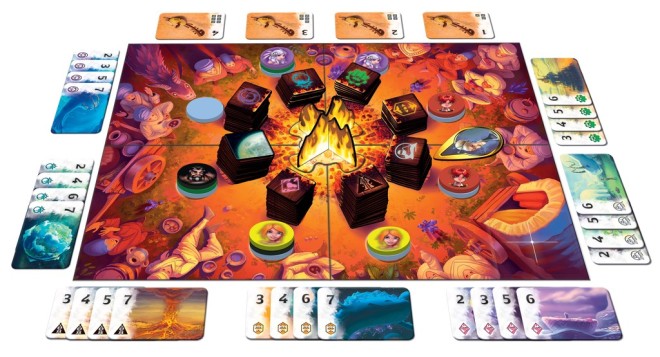
 DEADLINE
DEADLINE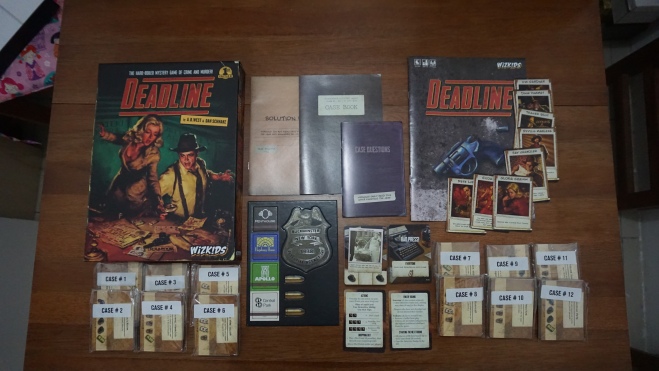
 PANIC MANSION
PANIC MANSION
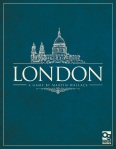 LONDON (2nd Edition)
LONDON (2nd Edition)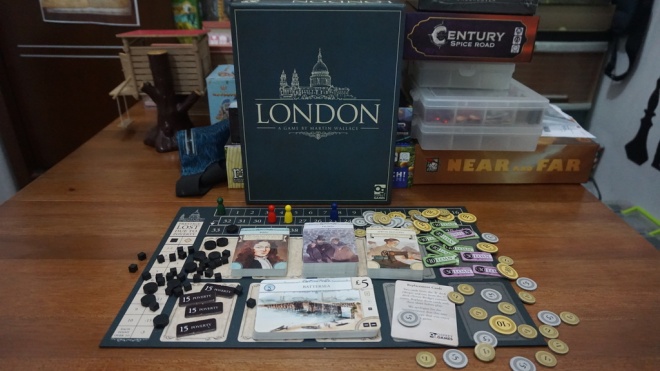
 INBETWEEN
INBETWEEN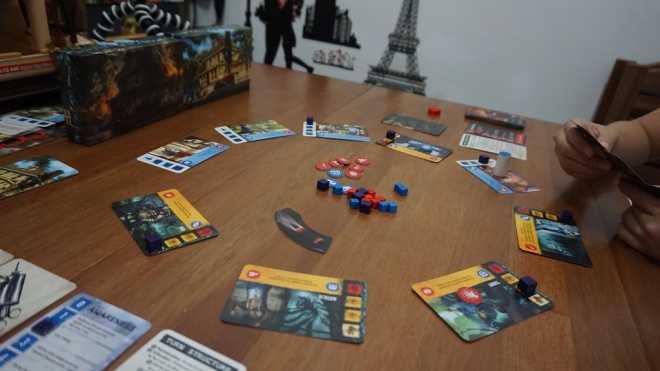
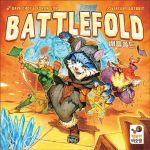 BATTLEFOLD
BATTLEFOLD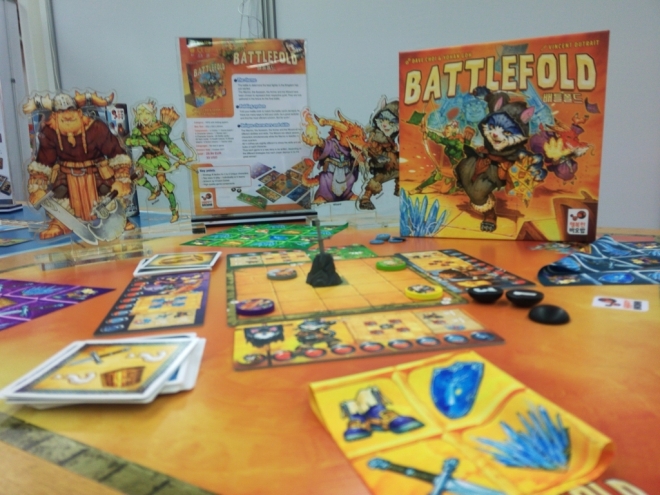
 RAJAS OF THE GANGES
RAJAS OF THE GANGES
 THE CLIMBERS
THE CLIMBERS
 FLATLINE: A FUSE AFTERSHOCK GAME
FLATLINE: A FUSE AFTERSHOCK GAME
 MEEPLE CIRCUS
MEEPLE CIRCUS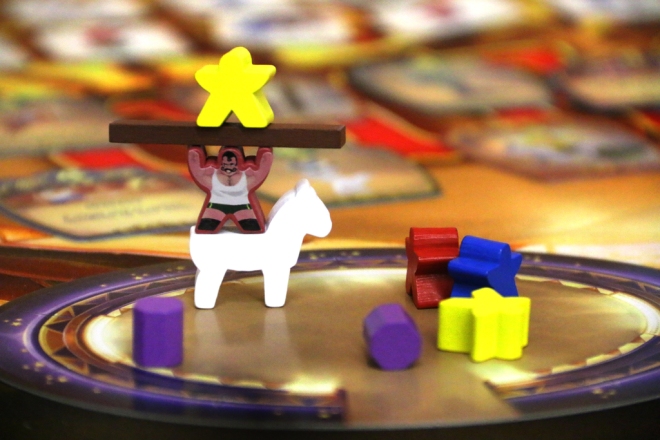
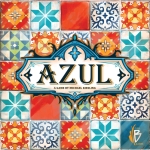 AZUL
AZUL
